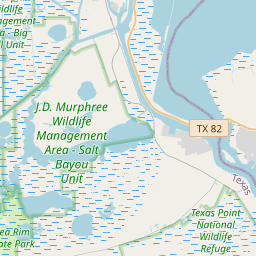Spanish-American War Fortifications







As tension mounted between the United States and Spain during the late 1890s, U. S. Representative Samuel Bronson Cooper of Texas recommended the War Department begin plans for the defense of the strategic Sabine Pass area. Maj. James B. Quinn of the Army Corps of Engineers in New Orleans, was authorized to direct construction of two forts on land granted by Augustus F. Kountze. Work on the batteries was under way by May 1898, one month after the formal war declaration. Military efforts were coordinated with area residents by government engineer J. L. Brownlee.
Although the emplacements were soon completed, the shore guns were never part of military action here. The Spanish-American War ended December 10, 1898, with the signing of the Treaty of Paris.
Later efforts were made to locate permanently a military installation at the site following the war. The plans were dropped, however, by 1901. In 1913, fifteen years after the war, the fortifications were the site of a tragic accident, in which a Sabine boy was killed when an abandoned ammunition cache exploded. Evidence of the fortifications has been severely damaged by hurricanes, but the site remains a symbol of an important era in U. S. history
As one of the most visible programs of the Texas Historical Commission (THC), historical markers commemorate diverse topics in Texas history, including: the history and architecture of houses, commercial and public buildings, religious congregations, and military sites; events that changed the course of local and state history; and individuals who have made lasting contributions to the state, community organizations, and businesses.
The city of Austin, the state capital, is known as the live music capital of the world. It is home to many music festivals, including South by Southwest (SXSW) and the Austin City Limits Music Festival.
In the early 1820s, Empresario Joseph Vehlein obtained a contract to settle 300 families in the region. The land, once inhabited by the Atakapa people, soon attracted settlers of various origins, including Americans, Europeans, and enslaved Africans. The area became known for its fertile soil, offering ideal conditions for agriculture and ranching.
The city of Beaumont was established in the mid-19th century and quickly developed into a major trading and shipping center due to its access to the Neches River and the Gulf of Mexico. The discovery of oil at Spindletop in 1901 marked a turning point in the county's history, as the region experienced a significant oil boom. This brought great prosperity and transformed the area's economy, leading to the development of the petrochemical industry in the following decades.
Throughout the 20th century, Jefferson County witnessed various social and economic changes. It played a key role in World War II, serving as the location for significant military activity, including the establishment of one of the largest military shipbuilding centers in the country. The county also experienced desegregation struggles during the Civil Rights Movement in the 1950s and 1960s, which eventually led to greater equality.
Today, Jefferson County continues to be an important industrial center for petrochemicals and petroleum-related industries. It is also home to a diverse population and offers a mix of urban and rural landscapes, with a variety of cultural and recreational opportunities for residents and visitors.
Jefferson County Timeline
This timeline provides a condensed summary of the historical journey of Jefferson County, Texas.
- 1836: Jefferson County is established as a municipality of the Republic of Texas.
- 1838: The town of Beaumont is founded.
- 1840: Jefferson County becomes part of the newly-formed State of Texas.
- 1845: Texas is admitted to the United States, and Jefferson County becomes a county within the state.
- 1858: A railroad is completed, connecting Beaumont to surrounding areas.
- 1865: The Civil War ends, and Jefferson County begins to recover from the war's impact.
- 1881: The Spindletop oil field, the first major oil discovery in Texas, is found in Jefferson County.
- 1901: The Lucas Gusher at Spindletop oil field erupts, launching the Texas oil boom.
- 1925: The Neches River is first navigable by deep-draft vessels, boosting the county's shipping industry.
- 1943: The Port of Beaumont is established as a major center for the shipping and petrochemical industries.
- 1989: Hurricane Gilbert strikes Jefferson County, causing significant damage to the area.
- 2005: Hurricane Rita makes landfall in Jefferson County, leading to widespread devastation.
- 2017: Hurricane Harvey causes widespread flooding in Jefferson County.